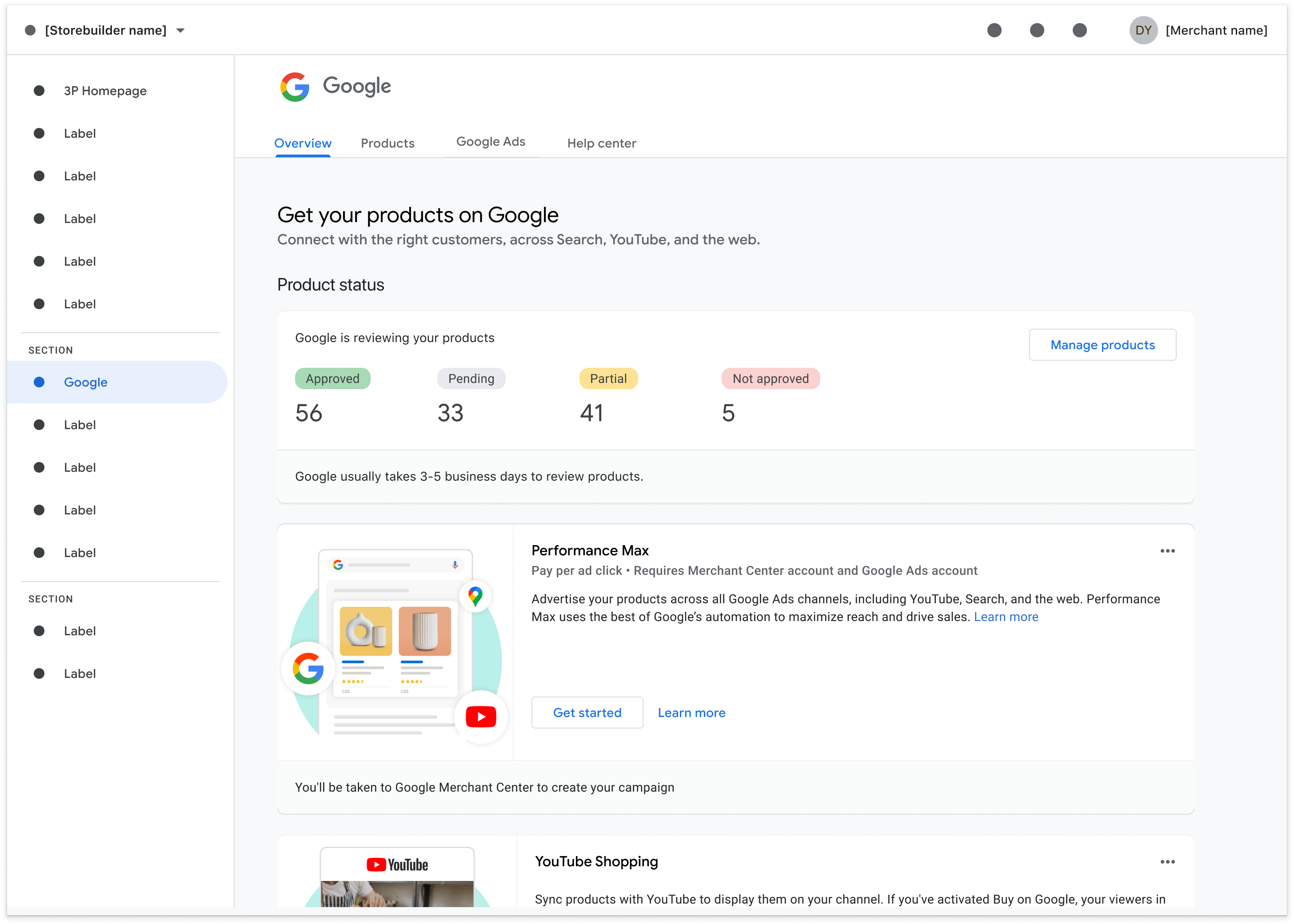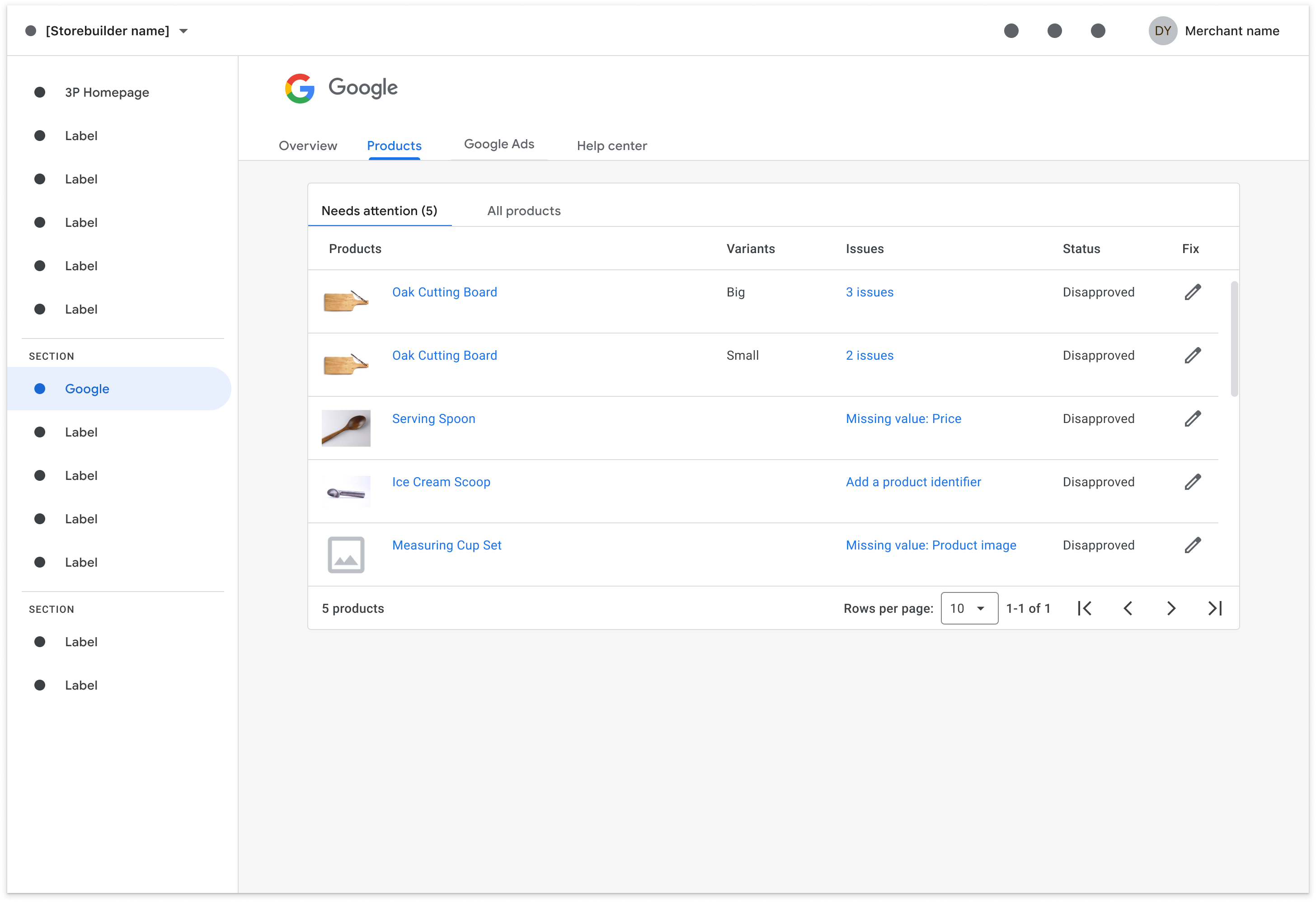商品级别的错误和警告
简介/业务影响
商家解决其帐号问题后,商品级问题属于优先事项,因为这是促成展示和点击的内容。请务必向商家提供必要的信息,帮助他们确定商品状态,以及修正商品问题的解决路径。
用户体验指南
对于发现的商品级问题,商家应该能够在信息中心查看问题类型、严重程度和受影响的商品数量的细分数据。在概览页面上,他们可以查看有多少商品(如果有)“未获批准”:

如果商家切换到“商品”标签页,他们可以看到哪些商品受商品级问题的影响。如果他们点击“问题”列下的问题链接,系统会提示他们修正这些错误。您可以点击此处,详细了解商品级别问题的解决和申诉流程。

当商家点击列表中的特定商品时,您应显示 Merchant Support API 提供的视图,如模拟示例中所述(此视图对于商品和帐号问题是相同的)。
技术指南
如需显示包含大量未获批准或已批准的商品和商品列表的概览页面,您可以使用商品过滤 API。
如需在详细视图中显示每个商品的问题,我们建议您使用新的商家支持服务呈现商品问题方法,向您的商家显示商品信息和问题。这种方法侧重于帮助商家解决问题,它提供多种功能,例如不同的支持的语言、更新后的政策以及对未来即将推出的新功能的支持。详细了解如何在界面中实现这种新方法。
此外,我们建议您查看以下资源,了解不同商品状态在 Merchant Center 和 Content API 中的工作原理。
我们建议商家修正被拒登和收到警告的商品,因为这会影响完全适合上架销售的商品的数量。
